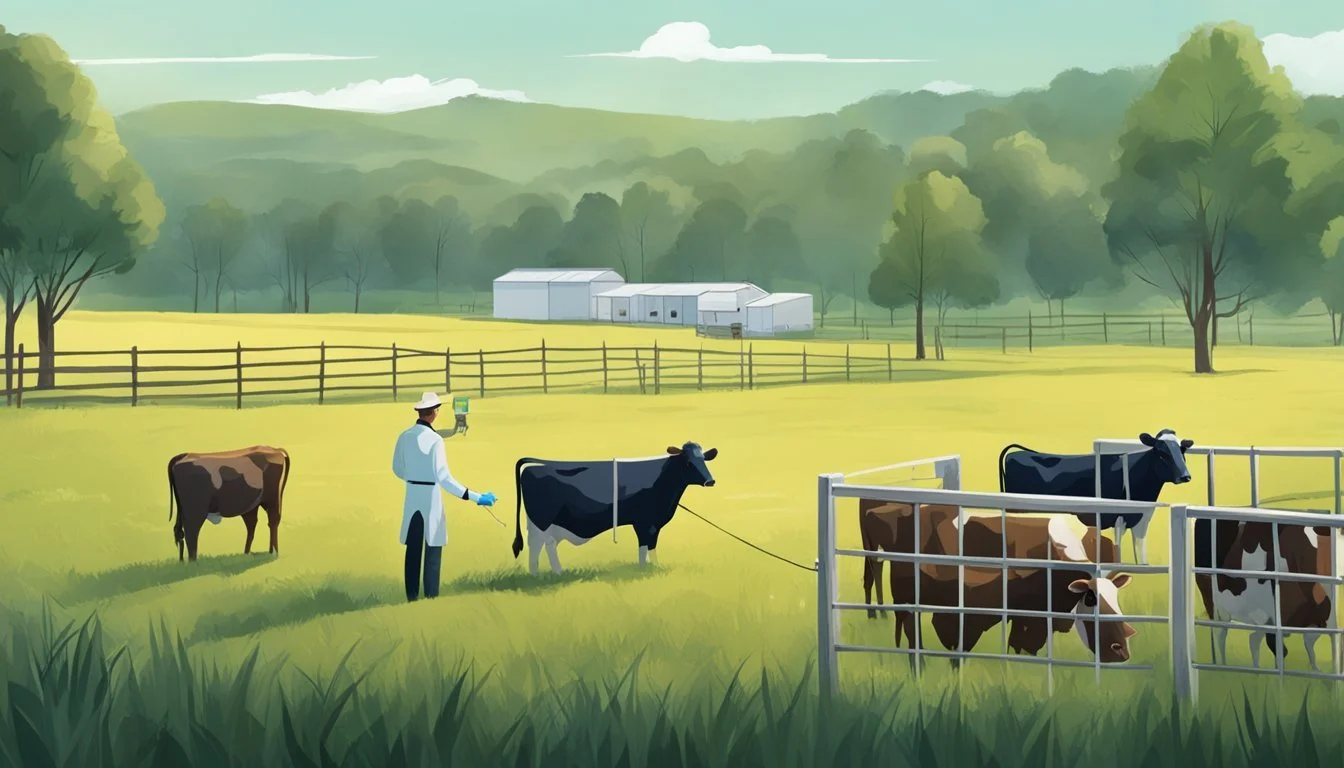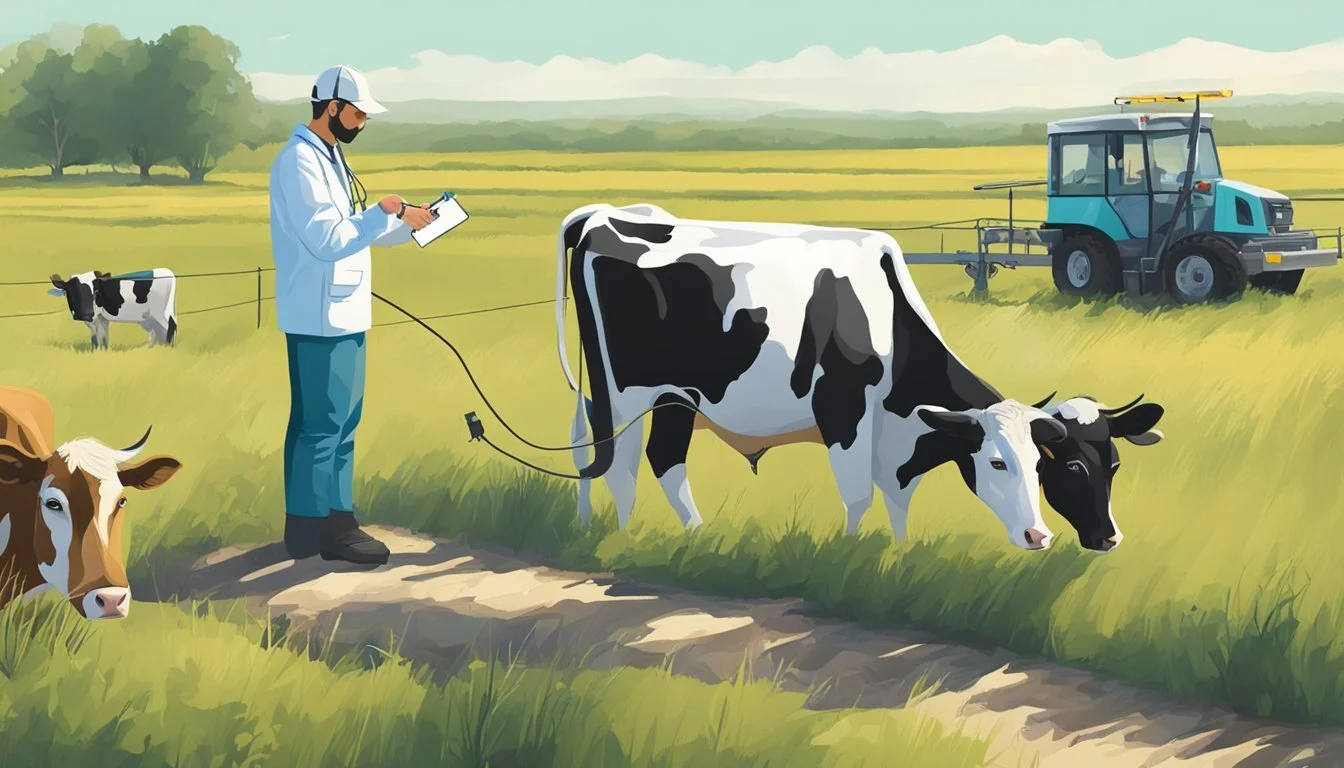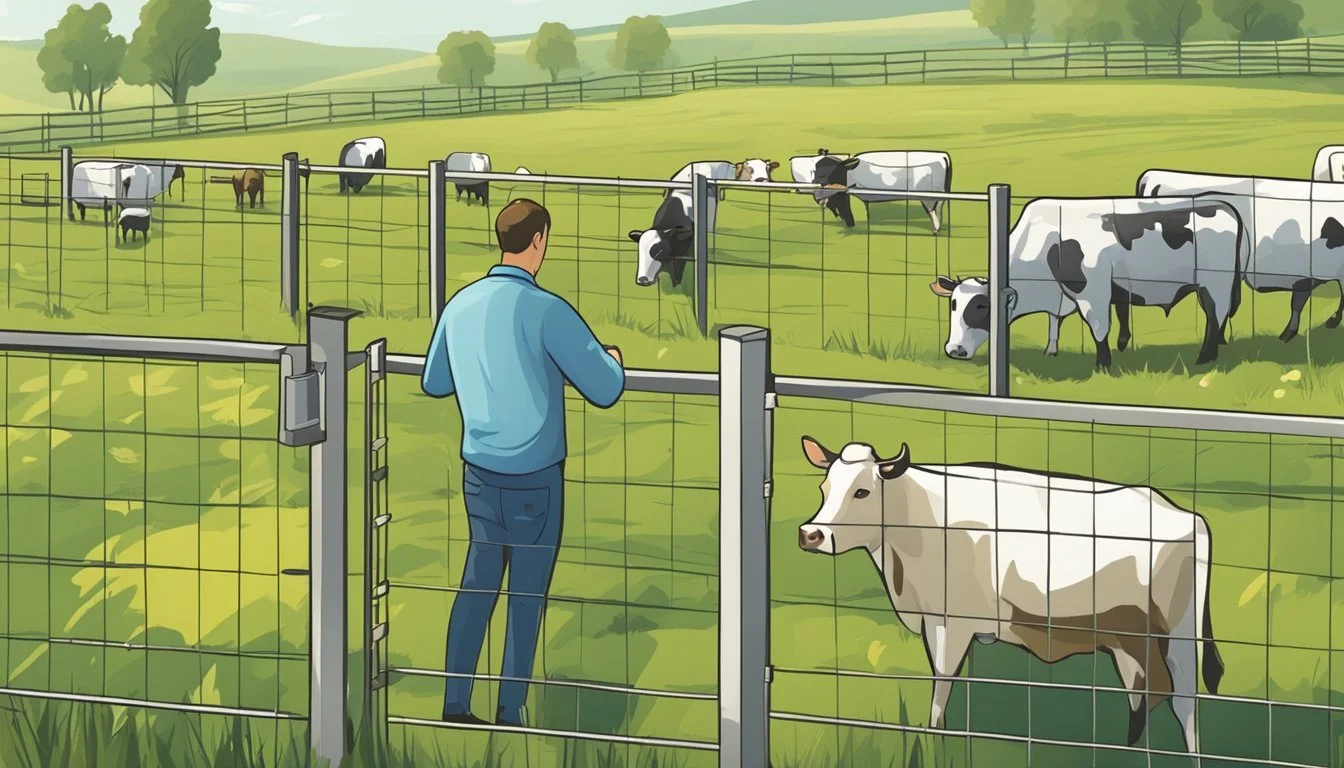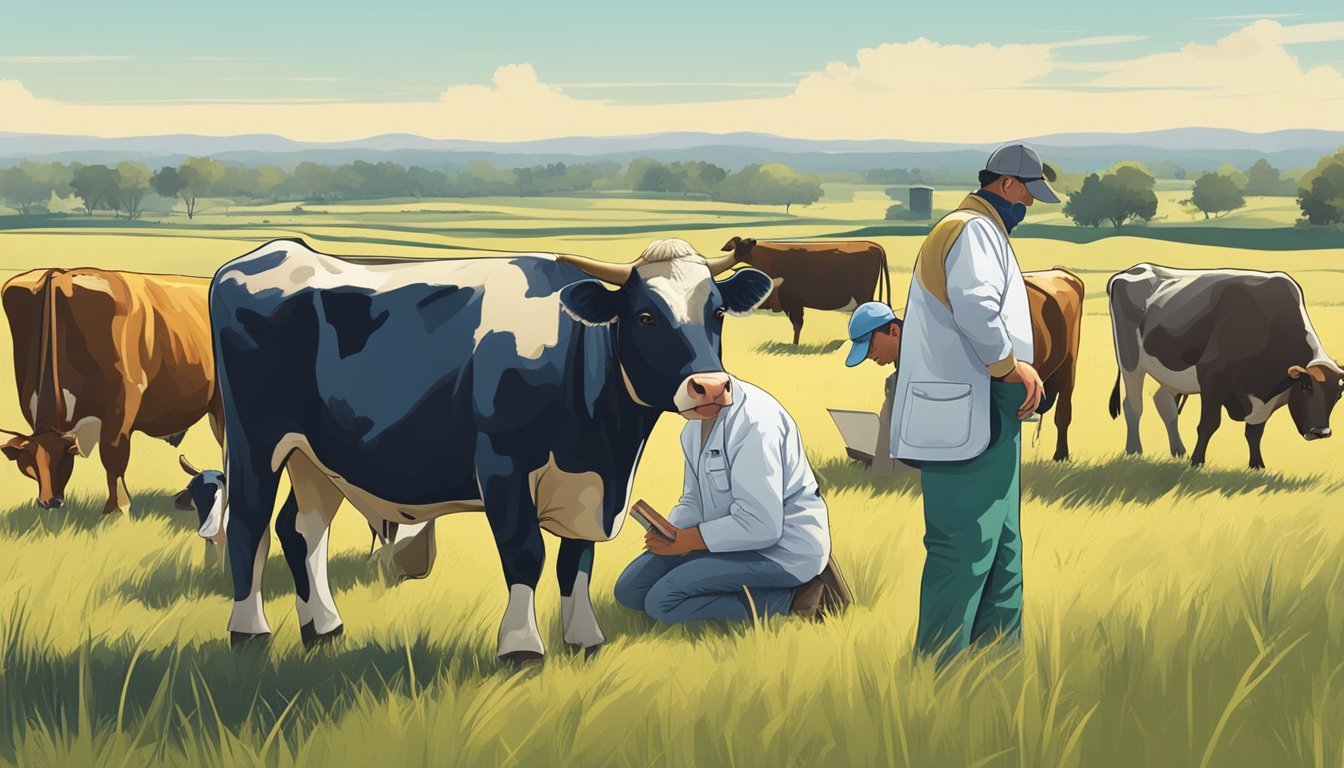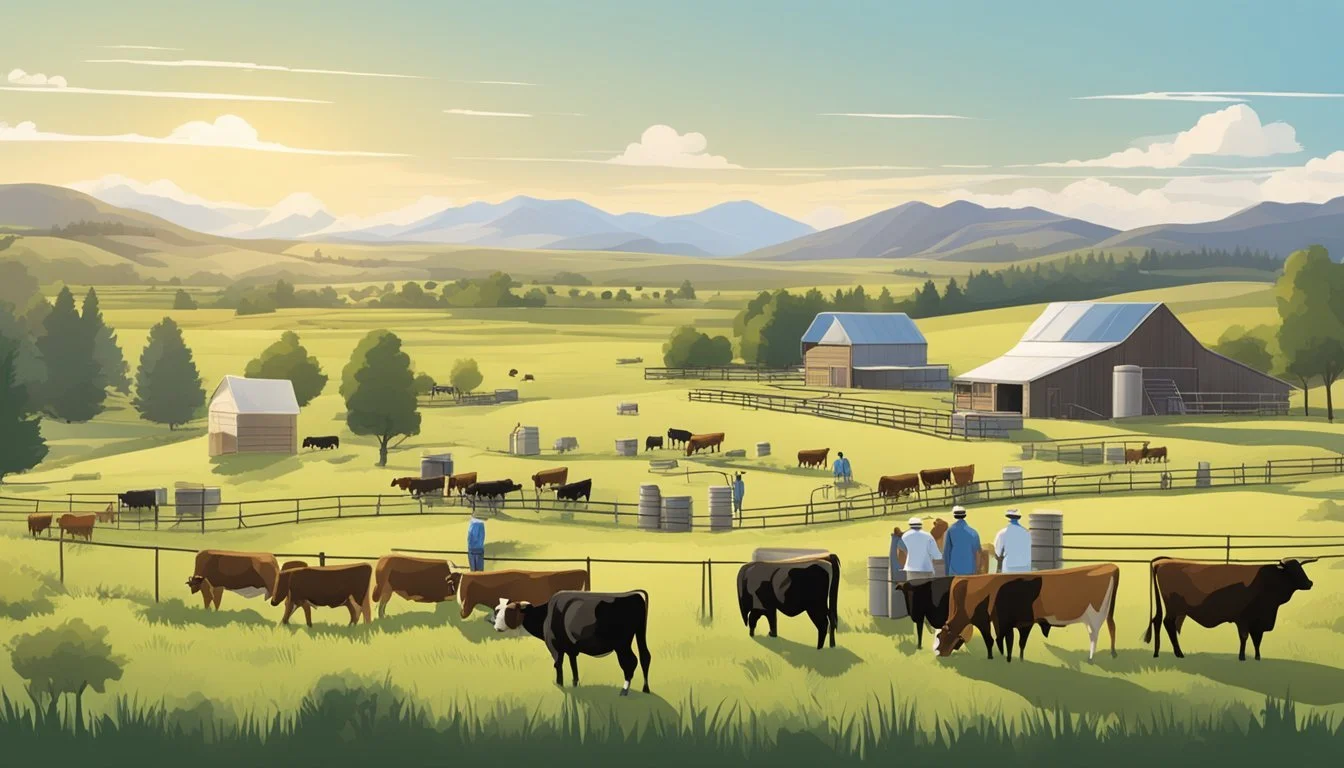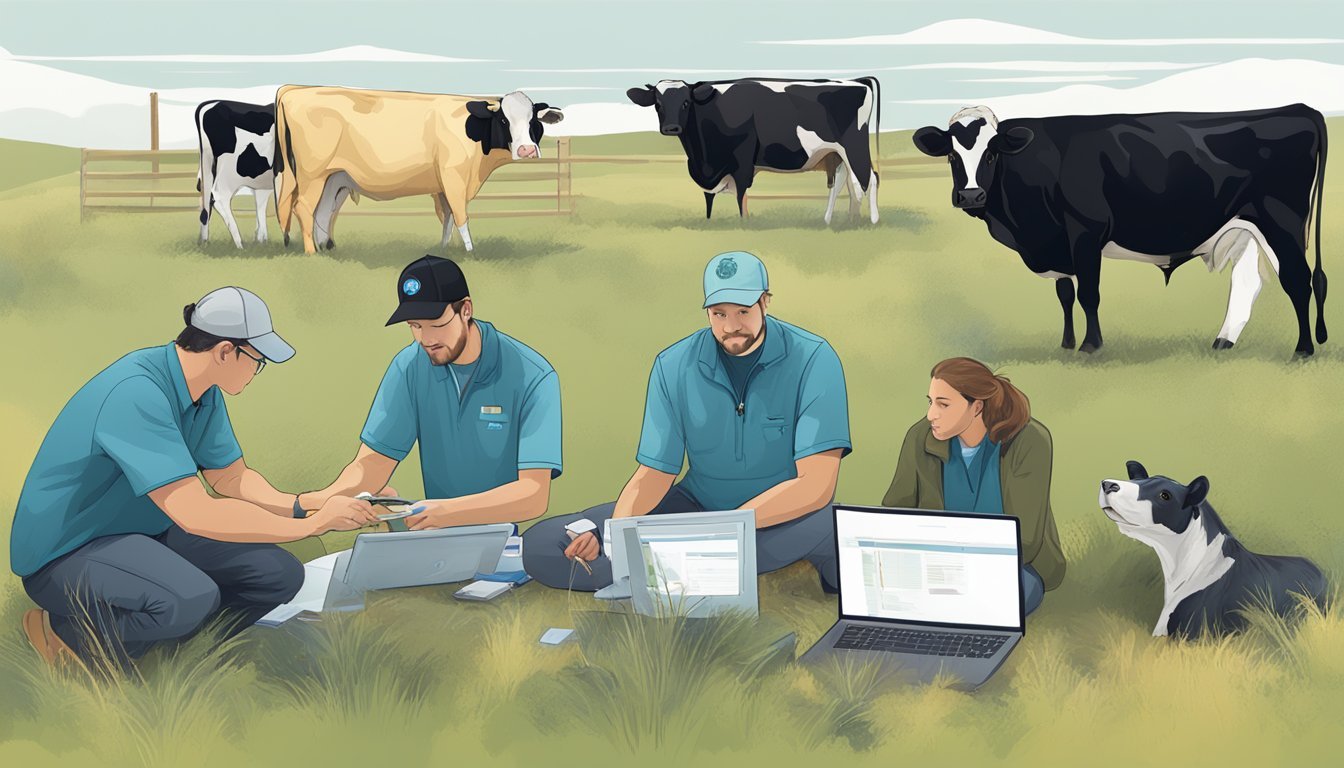Best Practices for Cattle Disease Surveillance
Key Strategies for Effective Monitoring
Cattle disease surveillance is an essential component of maintaining the health and productivity of livestock, as well as ensuring the safety of the food supply. Effective surveillance systems allow producers and authorities to monitor animal health, identify outbreaks quickly, and implement control measures to limit the spread of disease. This approach serves to protect against economic losses associated with diminished cattle productivity and trade restrictions, as diseases in cattle herds can lead to significant financial setbacks due to eradication efforts, treatment, and lost sales of beef and dairy products.
Surveillance practices encompass a range of activities, including regular observation of animal behavior and physical condition for signs of illness, diagnostic testing of herds for specific diseases, and necropsy examinations to determine causes of death. Whole herd surveillance testing is particularly important for diseases that can have a widespread impact on animal health and the industry at large. Information garnered through these surveillance methods provides a comprehensive view of the herd's health status and can guide biosecurity protocols, vaccination programs, and other preventative strategies.
A well-designed cattle health surveillance system encompasses not only domestic safeguards but also measures to prevent the introduction of foreign diseases. Partnerships among state agencies, industry stakeholders, federal bodies, and international organizations are crucial in coordinating efforts to monitor and limit the transmission of cattle diseases. By remaining vigilant and making informed decisions based on surveillance data, the agriculture industry can uphold the health and welfare of cattle populations and secure their role in the global food system.
Fundamentals of Cattle Disease Surveillance
Effective cattle disease surveillance is a critical component of livestock health management. It helps to detect disease outbreaks early, allowing for swift interventions.
Importance of Surveillance in Cattle Health
Surveillance in cattle health is vital for maintaining the wellbeing of livestock populations. It serves as a first line of defense against the spread of infectious diseases, which can have profound consequences on the livestock industry. Through diligent monitoring, one can ensure animal welfare, public health, and economic stability by preventing or controlling disease outbreaks before they become widespread.
Key Surveillance Types: Active and Passive
There are two primary types of surveillance systems: active and passive. Active surveillance involves regular, systematic collection, analysis, and interpretation of health-related data. It often includes activities such as routine testing and farm visitations to assess and record the health status of cattle. On the other hand, passive surveillance relies on reports of disease by veterinarians or livestock owners. Although less resource-intensive, it may lead to underreporting and delayed detection of a disease outbreak. Ultimately, an integrated approach that combines both active and passive methods can enhance the responsiveness and effectiveness of the surveillance system.
Role of Veterinarians in Disease Surveillance
Veterinarians are integral to the success of disease surveillance systems. They serve as the primary mediators between animal health and public health authorities, ensuring early detection and response to disease outbreaks.
Veterinary Services and Herd Health Programs
Veterinary services are crucial for maintaining healthy livestock populations. Veterinarians design and implement herd health programs that monitor and prevent disease through regular health checks and vaccinations. They provide farmers with strategic advice on animal management, biosecurity measures, and implement disease preventative methods tailored to specific herd needs.
Disease Reporting and Data Collection
When a veterinarian suspects or identifies an outbreak of disease, they follow protocols for disease reporting. This involves the systematic recording of clinical signs, test results, and epidemiological data. Data collection is a shared responsibility between veterinary professionals and veterinary authorities, providing crucial information that shapes disease control policies.
Coordination with Veterinary Authorities
Veterinarians often collaborate with local and national veterinary authorities to enhance the effectiveness of disease surveillance and response strategies. They contribute to the development of surveillance systems, inputting professional insights that are essential to policymaking. Their role includes providing critical information during disease investigations, outbreak responses, and participating in planning to enhance future disease control measures.
Epidemiological Considerations in Disease Control
Epidemiologists play a crucial role in the best practices of cattle disease surveillance. They analyze the dynamics of disease spread among populations to mitigate risks effectively. Their work has significant implications for public health, agriculture economies, and livestock management, especially within varied geographical contexts like Europe.
Understanding Disease Spread Dynamics
The kinetics of disease spread are fundamental to controlling livestock diseases. Epidemiologists study patterns such as the rate of infection and transmission modes within cattle populations. Interventions are designed based on pathogen life cycles and interactions between hosts and the environment. These may include quarantine protocols or vaccination schedules to curb the spread. Surveillance programs prioritize identifying outbreak sources, monitoring disease progression, and assessing the effectiveness of countermeasures.
Geographical Factors and Cattle Distribution
Geography has a profound effect on the prevalence and propagation of cattle diseases. Factors such as climate, terrain, and natural boundaries dictate not only the distribution of cattle but also the presence and movement of disease vectors. For instance, regions in Europe with high moisture and temperate climates may see different disease patterns than arid areas. Spatial analyses enable epidemiologists and livestock managers to strategize disease surveillance according to specific geographical challenges and resources.
Socio-Economic Impact of Livestock Diseases
The economic impact of cattle diseases extends beyond direct costs of treatment and containment. Outbreaks can disrupt trade, affect the stability of farmers' livelihoods, and influence market prices for beef and dairy products. From a socio-economic standpoint, the effectiveness of disease surveillance systems can determine the resilience of communities dependent on cattle for income. A profound understanding of these impacts drives the design of surveillance systems that not only protect animal health but also support economic stability in agricultural sectors.
Best Practices for Surveillance Implementation
Implementing best practices in cattle disease surveillance is critical for early detection and containment of animal health threats. Such practices are essential to maintain quality in data collection and leverage technological advancements.
Developing Effective Monitoring Systems
Effective monitoring systems are the cornerstone of robust surveillance. They must be capable of real-time data acquisition and proper recording of occurrences to provide timely information. A structured approach often includes established protocols for the identification of symptoms and reporting mechanisms that allow for rapid response. Employing social network analysis can unveil patterns in disease spread among cattle populations, which is paramount for early detection and subsequent control measures.
Quality Assurance in Data Collection
Data quality is imperative; hence, quality assurance measures should be in place to validate and verify the information gathered. Teams on the ground must ensure that data are accurate, complete, and consistent. Regular training on data collection methodologies helps maintain high standards of data integrity. This, in turn, bolsters the credibility of the surveillance system, making it a reliable source for stakeholders.
Use of Technology and Data Analysis Tools
Leveraging technology and data analysis tools can greatly enhance the surveillance system's effectiveness. Geographic Information Systems (GIS) and other spatial analysis tools facilitate mapping disease outbreaks, while advanced algorithms can perform predictive analytics for outbreak patterns. Integrating these technologies improves the quality and utility of collected data, allowing for a more strategic approach to disease management and decision-making.
Management of Disease Outbreaks
Effective management of disease outbreaks in cattle requires a comprehensive approach that encompasses prevention, timely response, and thorough post-outbreak analysis. This holistic strategy not only helps in controlling the current outbreak but also in refining policies to mitigate future occurrences.
Prevention and Early Detection Strategies
Prevention hinges on robust surveillance systems capable of early detection, which can significantly reduce the scale of an outbreak. Strategies include regular disease screening and systemic observation of herds. Key components involve employing sentinel surveillance schemes in markets or farms which have been proven to detect diseases early. For instance, an Early warning of infectious disease outbreaks on cattle-transport networks study demonstrated that market surveillance can identify outbreaks with fewer infected nodes than farm surveillance. Additionally, whole herd surveillance is recommended for certain diseases to maintain up-to-the-minute disease status knowledge.
Response and Eradication Programmes
Once an outbreak is detected, a swift response is essential. Eradication of the disease involves treatment protocols tailored to the specific pathogen and may include quarantine measures, vaccination campaigns, or culling where necessary. The USDA's Cattle Health Surveillance provides a blueprint for such responses, designed to quickly locate and limit disease spread. Policy makers must ensure that the responses are proportionate to the severity and nature of the outbreak to prevent unnecessary economic losses.
Post-Outbreak Evaluation and Policy Development
After controlling a disease outbreak, a thorough evaluation is crucial to improve current practices. This involves analyzing each step of the outbreak management to identify any weaknesses or strengths. Lessons learned contribute to developing refined policies for future prevention and management. For example, frameworks discussed in Frameworks for Preventing, Detecting, and Controlling Zoonotic Diseases emphasize innovation at the intersection of human, domestic animal, and livestock health to enhance capacity for future outbreak control. Policy makers and health officials then develop new or adjusted regulations and guidelines to improve the overall health and biosecurity of cattle herds.
Farmer Involvement and Education
Effective disease surveillance in cattle is greatly enhanced when farmers are actively involved and educated. They play a critical role in recognizing disease symptoms and implementing control measures to protect their herds and sustain livestock production.
Training Farmers in Disease Recognition
Farmers need training in disease recognition to identify symptoms early. Workshops and hands-on sessions can equip them with the necessary skills. This education is vital for them to differentiate between common ailments and those that signal the onset of more serious diseases.
Building a Culture of Regular Health Checks
Regular health checks are a cornerstone of effective disease control. By establishing routine monitoring activities, farmers can detect issues before they escalate, benefiting the overall health of the herds. This includes training on how to conduct examinations and keeping thorough health records for each animal.
Community-Based Approaches to Disease Control
A community-based approach engages multiple farmers in an area to work together on disease control. This strategy creates a shared responsibility for health that can lead to more effective and rapid responses to disease outbreaks, benefiting everyone involved in livestock production.
International Standards and Regulatory Bodies
Adhering to international standards and guidelines is crucial for effective cattle disease surveillance. Regulatory bodies play a significant role in establishing these standards and implementing control measures to ensure the health of livestock populations.
World Organisation for Animal Health (OIE) Guidelines
The World Organisation for Animal Health, commonly referred to as OIE, sets international standards for the surveillance and control of animal diseases. It provides a framework for safe international trade in animals and animal products and ensures transparency in the global animal disease situation. The OIE's guidelines are considered a reference for the development of national veterinary services.
Food and Agriculture Organization (FAO) Initiatives
The Food and Agriculture Organization (FAO) undertakes numerous initiatives aimed at improving animal health. It works in close collaboration with the OIE to enhance disease control measures and support the registration of livestock. The FAO emphasizes the importance of preventing transboundary animal diseases and improving food security through resilient agricultural systems.
National and International Disease Monitoring Programs
Effective cattle disease surveillance is only possible through robust national and international monitoring programs. These programs employ various measures for early detection, reporting, and response to animal diseases. Countries often adopt OIE standards to shape their national surveillance systems, encompassing disease detection, registration, and notification processes. International cooperation is vital for monitoring transboundary diseases and taking prompt control actions.
Advances in Surveillance Techniques
Developing effective cattle disease surveillance systems has become more critical than ever, given the implications for food security and the need for an early warning system. Enhanced tracking of cattle movements and disease patterns through innovative techniques not only aids in timely interventions but bolsters overall animal and public health infrastructure.
Genomic Tools and Their Application
Genomic tools have revolutionized surveillance, offering insights into the genetic makeup of pathogens. They enable the precise identification of disease strains, facilitating a targeted response. Their application in cattle disease surveillance has been pivotal in understanding the transmission dynamics and in developing strategies for disease prevention and control.
Innovative Diagnostic Methods
Recent advances have led to the development of more rapid and accurate diagnostic methods. These innovative approaches include portable, field-ready kits that allow for on-site testing, reducing the time between sampling and diagnosis. Timeliness is key in disease containment, and such tools are integral in reinforcing an early warning system for diseases in cattle populations.
Machine Learning and Predictive Analytics
Machine learning and predictive analytics are increasingly being integrated into surveillance strategies, offering a way to sift through vast datasets for patterns that may elude human analysts. These sophisticated analytic tools can predict potential outbreaks by analyzing cattle movement patterns and historical disease data, providing invaluable support for decision-making processes in disease management and ensuring food security.
By leveraging these advanced surveillance techniques, stakeholders in the cattle industry are better equipped to detect and respond to health threats, ensuring the safety and sustainability of livestock production.
Establishing a Holistic Surveillance Framework
In addressing the complexities of cattle disease surveillance, a comprehensive framework is imperative. This includes intertwining surveillance into farm management, ensuring economic and health factors are well-balanced, and encouraging intersectoral collaboration.
Integrating Surveillance with Overall Farm Management
Surveillance systems should be seamlessly integrated into overall farm management to effectively monitor cattle health. This involves incorporating regular health checks into animal husbandry routines and aligning management decisions with surveillance data. Farmers should employ management strategies that are data-informed, allowing for timely interventions and adherence to control programs aimed at disease prevention and containment.
Balancing Economic Viability with Health Outcomes
Effective surveillance systems must balance economic viability and health outcomes. While control programs are crucial for maintaining herd health, they should also be cost-effective to ensure the long-term sustainability of farming operations. Farmers are tasked with making management decisions that serve both the health of their cattle and the economic prosperity of the farm, which necessitates a careful analysis of the cost-benefit ratio of different health interventions and surveillance approaches.
Collaborative Efforts Across Sectors
A holistic surveillance framework calls for collaborative efforts across various sectors including veterinarians, ecologists, and public health officials. By fostering a One Health approach, where human, animal, and environmental health are interlinked, stakeholders can develop and implement more effective disease control programs. Collaboration leads to diverse expertise converging on a common goal: the reduction of disease incidence through comprehensive surveillance and multi-faceted management strategies.
Challenges and Future Directions
Effective cattle disease surveillance is pivotal in safeguarding livestock health and ensuring public safety, yet it faces various hurdles and requires forward-thinking strategies for improvement.
Addressing Zoonotic Diseases and Public Health
The intersection between livestock diseases and human health is most notably represented in the management of zoonotic diseases. With the rising prevalence of illnesses such as Lyme disease or bovine tuberculosis, it becomes crucial to strengthen One Health approaches. These multifaceted strategies aim to coalesce animal, human, and environmental health for robust zoonotic disease surveillance and response mechanisms, ensuring integrated monitoring and control measures are in place.
Adapting to Climate Change and Emerging Threats
Climate change introduces new challenges in disease surveillance, including the emergence of vector-borne diseases and shifts in disease distribution. This is particularly evident with tick-borne diseases threatening cattle, as vectors expand into new areas due to changing temperatures. Adapting surveillance to anticipate and mitigate these threats involves developing predictive models and implementing resilient agricultural practices, especially as droughts and extreme weather events become more common.
Strengthening Infrastructure in Developing Regions
In regions like sub-Saharan Africa, where livestock diseases can devastate economies, enhancing surveillance infrastructure is vital. Factors such as accessibility to veterinary services, diagnostic capabilities, and real-time data collection methods need significant reinforcement. Investment in technology, training, and community-based approaches is required to establish comprehensive disease surveillance systems that can withstand the challenges presented by limited resources and infrastructure.
By addressing these challenges head-on and charting a course for the future, cattle disease surveillance can protect not only livestock but also the broader public health, contributing to a safer, more secure food supply.

